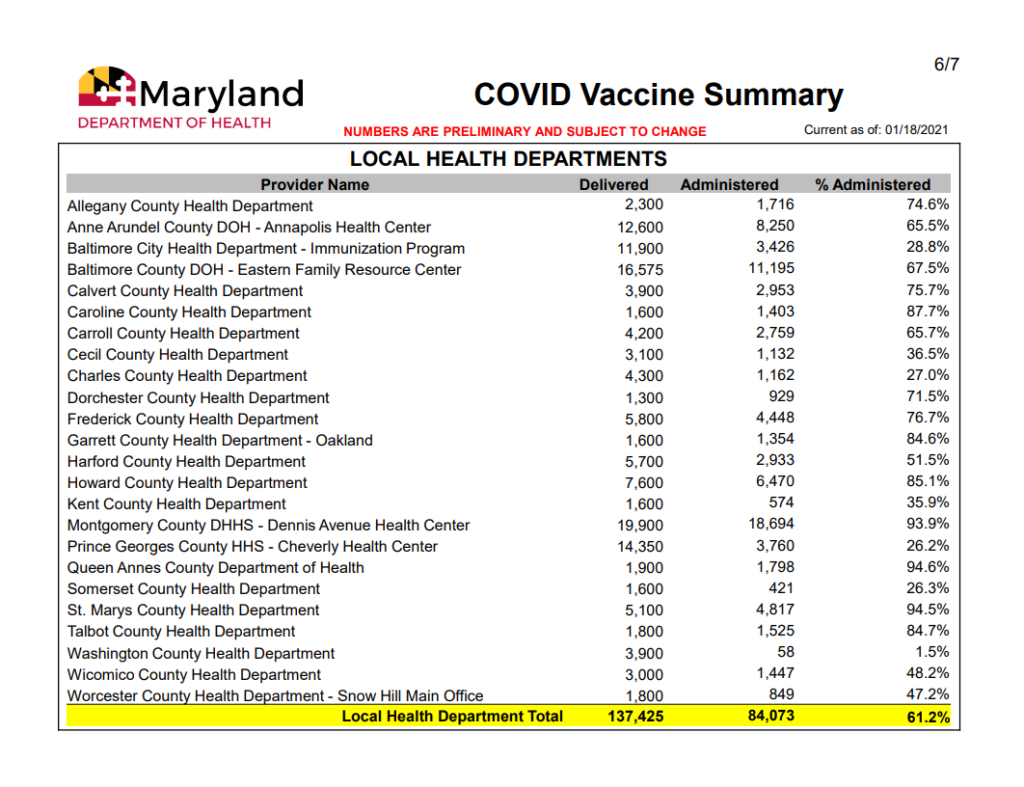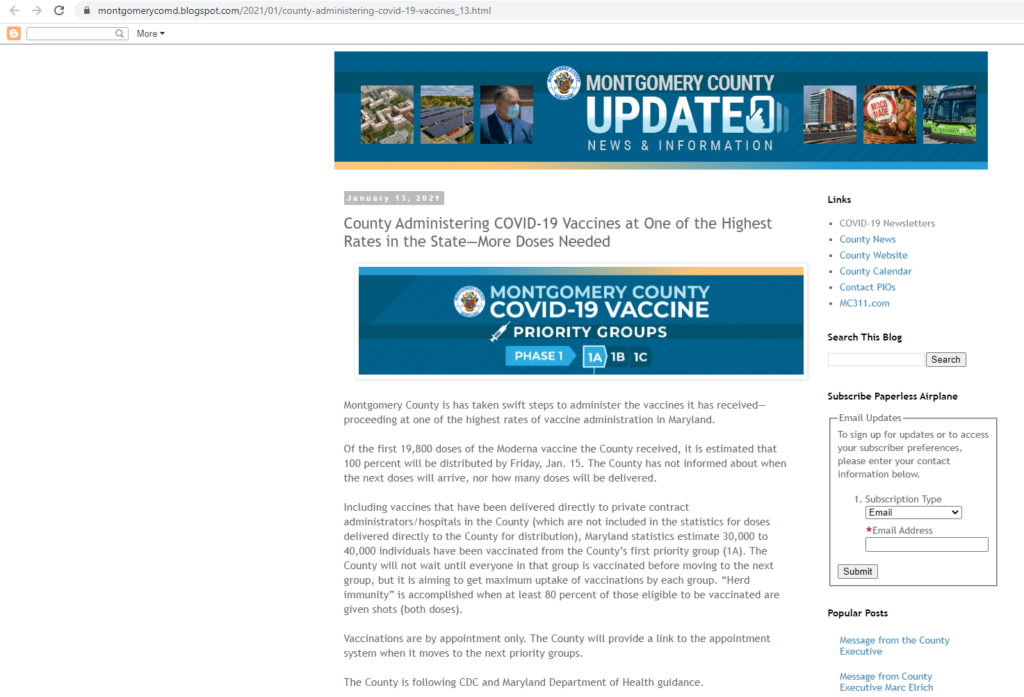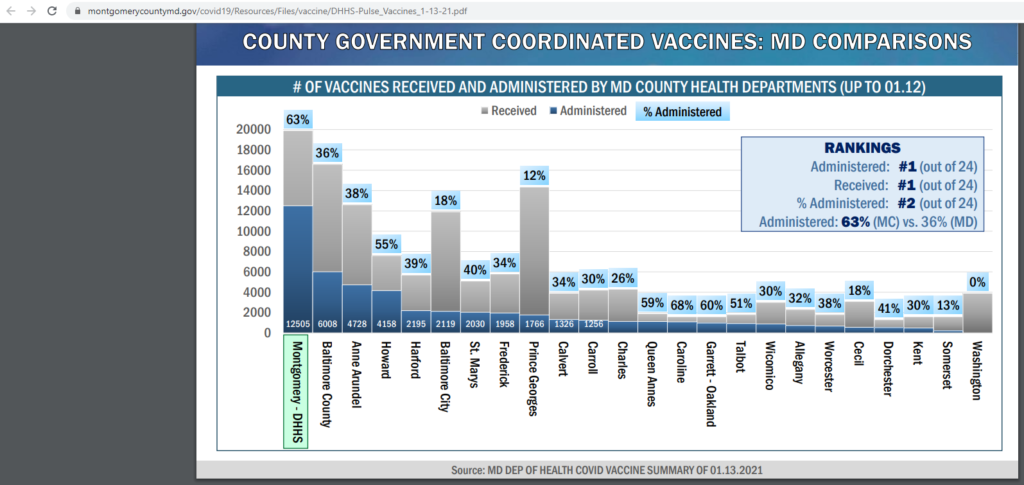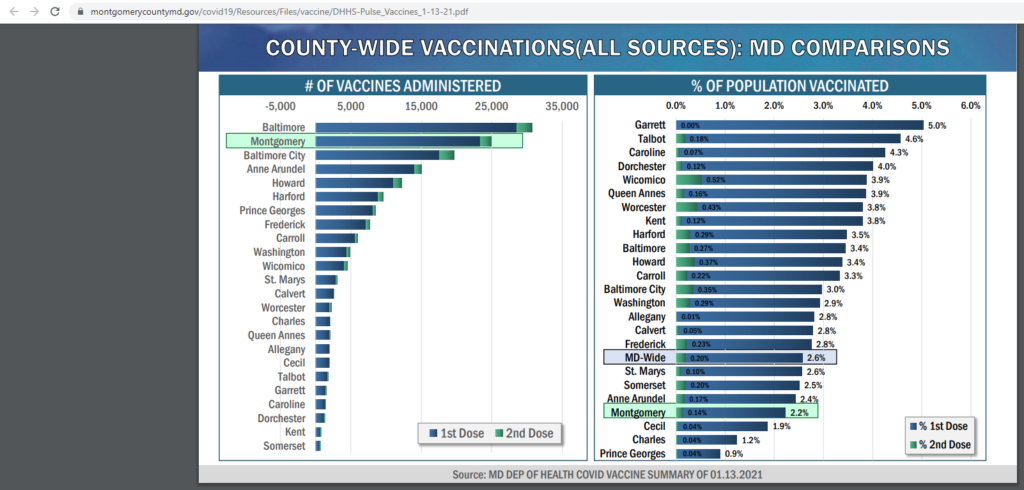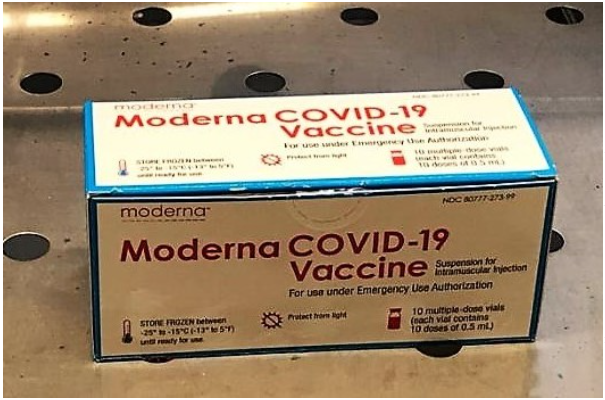As we roll out the big effort to vaccinate everyone, there has been some confusion. Here’s some information that will hopefully help you sort out what’s going on and why.
State Announcement Jumped the Gun
Governor Larry Hogan announced that people 75 and older in Priority Group 1B would be eligible to receive the vaccine beginning this past Monday. Hogan notified the counties around two hours before the announcement.
The problem, however, is that many counties have not finished vaccinating the people in Priority Group 1A, which includes healthcare providers who could easily become vectors of spreading the virus. As Adam detailed yesterday, Montgomery has received comparatively little vaccine but been vaccinating at a high rate.
Each group is also divided into three tiers. In 1B, Tier 1 includes people 75 and over. Some thought that everyone in Tier 1B would become eligible at once but the county is starting with Tier 1. If you are a Montgomery resident in this tier, you can now preregister for an appointment.
The Governor’s announcement has preceded availability here in Montgomery. This naturally created confusion and unhappiness among some that residents over 75 who thought that they could get the vaccine or even cannot be legally barred from receiving it.
Appointment Software SNAFU
The State has mandated that all county governments use the same appointment software, which was originally designed for the flu vaccine. Flu vaccine is usually plentiful, but we unfortunately have to ration COVID-19 vaccine and have eligibility requirements.
Designed for a situation with plenty of vaccine and the desire to vaccinate as fast as possible, the state-mandated software spits out offers for appointments as soon as they are available and doesn’t take into account eligibility.
This has resulted in people in 1B who thought they were eligible making appointments and then getting turned away because they weren’t. Even though Montgomery is still trying to finish vaccinating 1A, the county began on Thursday to allow anyone who is 75 and over (i.e. Tier 1 of 1B) and showed up for an appointment to get the vaccine.
Councilmember Email Blasts Exacerbated Confusion
Email blasts from some county councilmembers compounded the problem created by the Governor’s announcement by indicating that the county was moving to 1B now and urging people to sign up in all tiers.
Hospitals v. County Vaccination Centers
For whatever reason, 40-50% of people working in hospitals have decided not to get the vaccine. As a result, hospitals have extra. Rather than let it go to waste, they have sensibly been vaccinating people 75 and over, so hospitals have operated differently from county centers.
Ready for More Vaccine
I have heard that vaccination centers have far more people ready to do the vaccinations than people to receive it. While this may seem bizarre, it’s good news because it means that Montgomery may be better prepared for mass vaccinations as more vaccine becomes available.

